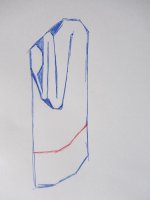Hi everyone,
I have some questions about horn design.
When trying to design one, what is more important, the length of the horn or the mouth area?
And what about the width of the horn pathaway (consider watching the design from the side, not from the front), does it affect the sound? Of course I don't think that a width of 2cm can be the same as a 10 cm one, but is there a minimum and how does different width affect the sound?
Is there a big difference between a nagaoka styled horn and a horn that expands like the dallas one?
Thanks in advance,
Ervin
I have some questions about horn design.
When trying to design one, what is more important, the length of the horn or the mouth area?
And what about the width of the horn pathaway (consider watching the design from the side, not from the front), does it affect the sound? Of course I don't think that a width of 2cm can be the same as a 10 cm one, but is there a minimum and how does different width affect the sound?
Is there a big difference between a nagaoka styled horn and a horn that expands like the dallas one?
Thanks in advance,
Ervin
This is what I was talking of (look image). I should have done two different designs, but I've done only one. Given the same height, which one do you think would perform better, the one with a longer horn pathaway and a smaller mouth (the one with the red base) or the other, which is shorter but has a bigger mouth?
Attachments
Both length and area have a strong influence on the horn's low bass.
Try using Hornresp to compare simulator roll-off to manual calculation using empirical rules.
Taper also has a big influence, that will determine the throat area, after taking into account length and mouth area.
Try using Hornresp to compare simulator roll-off to manual calculation using empirical rules.
Taper also has a big influence, that will determine the throat area, after taking into account length and mouth area.
The BLH you see are all hybrids, they are to small to work as true horns all the way down in the bass. They have 1/4 wave resonances like any other pipe. To work as a true horn it has to have a lenght that is at least 1/4 wavelenth of that cutof, preferably 1/2 a wavelength. Then the flare has to expand slow enough and lastly the mouth has to be of a certain size. The size thing is dependent on how it is placed compared to a freely suspended horn a horn on the floor need 1/2 the area, a horn on the floor close to a wall 1/4 area and in the corner 1/4 of the area.
I would say that most BLHs fall short on the area not length and flare.
Regarding sideway With:
The simplest horn calculators calculate with a circular horn so horn sections that have a with/hight ratio way of 1 may behave differently. As I understand your question you really ask about bending radius if we asume that the horn will be folded. When the wave lenght is longer than the radius the wave goes around the bend with little losses, so smaller radius means higher frequencies goes around the bends. In many BLH reflectors and such is not used as you often want to use the low pass filter effect of the bends to stop the horn from emitting unwanted midrange.
I would say that most BLHs fall short on the area not length and flare.
Regarding sideway With:
The simplest horn calculators calculate with a circular horn so horn sections that have a with/hight ratio way of 1 may behave differently. As I understand your question you really ask about bending radius if we asume that the horn will be folded. When the wave lenght is longer than the radius the wave goes around the bend with little losses, so smaller radius means higher frequencies goes around the bends. In many BLH reflectors and such is not used as you often want to use the low pass filter effect of the bends to stop the horn from emitting unwanted midrange.
- Status
- This old topic is closed. If you want to reopen this topic, contact a moderator using the "Report Post" button.
